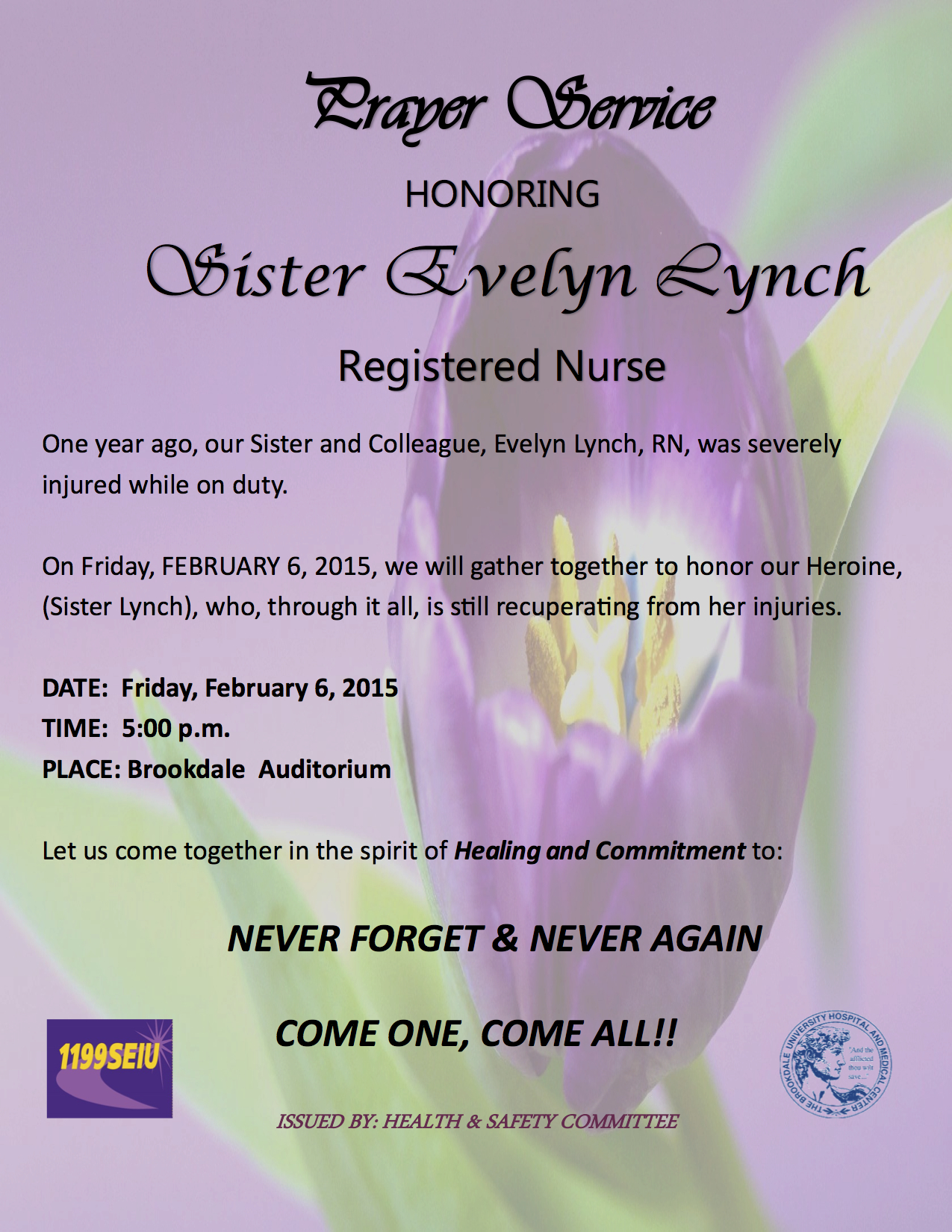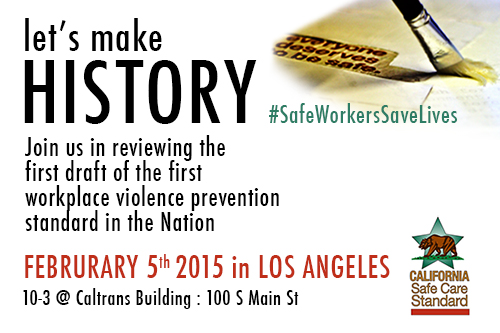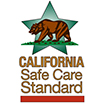By Richard Negri, Health and Safety Director, SEIU Local 121RN
There were a few themes yesterday, November 19, at the Cal/OSHA advisory meeting on workplace violence prevention in healthcare, and some were more startling than others. The purpose of these meetings is for stakeholders to publicly discuss what they believe should or should not be in the regulation, a draft of which Cal/OSHA says will be shared by January or February of next year.
The meeting was set up as a panel discussion led primarily by representatives of employer security staff and law enforcement who echoed each other’s sentiment that security is “everyone’s responsibility.” Healthcare workers and workers’ rights advocates repeatedly reminded the panelists and other stakeholders of the Occupational Safety and Health Act, which states that it is the employer’s responsibility to provide a safe workplace for their employees.
The argument that security is “everyone’s responsibility” was also met with the reality that many workers who act on health and safety hazards on the job – who intervene, complain, file a report, and so on – are often disciplined or retaliated against by the very management who are laying the responsibility for our security on us. To highlight this, a story was shared about a nurse who intervened to assist another healthcare worker who was about to get hurt in a violent situation. The nurse was able to control the hazard, the aggressor was calmed down and, in the end, no one was hurt. That nurse who intervened got written up by management and then was suspended.
The issue of training was also discussed at length. We need and want training. However, training should not be with the expectation that we are then to act as our own security team. Healthcare workers are not security personnel – we should not be approaching patients to frisk them, wand them, or anything of the sort. As one nurse said, “patients and their families are already scared of us because they or their loved ones are sick and to put more barriers of distrust between them and us, who are there to provide healthcare, has to stop.”
We reminded the law enforcement representatives that if any of them were to get kicked, spit at, punched, stabbed, or worse, the perpetrator would be facing some serious charges, and some of those very perpetrators are brought to our ERs that serve as “holding cells” where we are expected to give quality healthcare.Cost was predictably an issue for employer representatives. A California Hospital Association spokesperson said that some hospitals are very small and can’t afford adequate security, and we had to remind her that healthcare workers in these facilities don’t give less quality healthcare because of an institution’s financial status. An industry that has $243 million to spend on lobbying in Washington, D.C. in one year alone really has no business complaining about low cost administrative and engineering controls that would make its workplaces safer for its workers and the populations they serve.
At the end of the day, it was a robust and informative meeting. Cal/OSHA did a fantastic job in chairing the discussion, and workers, advocates, and activists again moved the discussion to reality-based issues as opposed to spin-doctored messaging that does everything and anything but control the hazard of violence on the job.
Cal/OSHA was very clear in stating that they need and want to hear from anyone who has something to be shared around workplace violence in healthcare settings. They want to consider each and every angle as they begin drafting this regulation. You should be empowered to get heard on this issue by emailing Bob Nakamura at Cal/OSHA or, if you prefer, me, and I will forward your message along.
Did you like this? Share it:




